*** NOTE: latest gerbers in post # 81 *** NOTE ***
Just 4 fun I have designed (now some years ago) a 4 channel class D power amplifier to get some feeling and knowledge about building class D amplifiers.
Attached some schematics and pictures of the result.
After searching for a simple chip I found the TDA8950j which has from low to mid range an acceptable good THD performance.
The TDA8950j can be clocked externally which I have used in this design to avoid interferences of the different pwm clocks in the audible range.
Maximum output power per channel is 300W/8R.
The amp pcb is single sided and uses some smt devices to save space and to fulfill some datasheet requirements.
For DIY use only feel free to build your party power machine.
BR, Toni
Just 4 fun I have designed (now some years ago) a 4 channel class D power amplifier to get some feeling and knowledge about building class D amplifiers.
Attached some schematics and pictures of the result.
After searching for a simple chip I found the TDA8950j which has from low to mid range an acceptable good THD performance.
The TDA8950j can be clocked externally which I have used in this design to avoid interferences of the different pwm clocks in the audible range.
Maximum output power per channel is 300W/8R.
The amp pcb is single sided and uses some smt devices to save space and to fulfill some datasheet requirements.
For DIY use only feel free to build your party power machine.
BR, Toni
Attachments
-
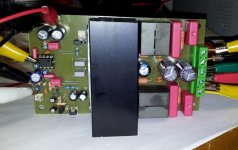 1200x900-2012-03-04 18.25.50.jpg58.6 KB · Views: 2,709
1200x900-2012-03-04 18.25.50.jpg58.6 KB · Views: 2,709 -
class_d_preamp_powersupply_schematic.pdf19.6 KB · Views: 538
-
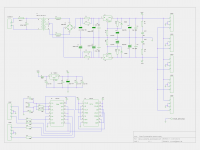 class_d_preamp_powersupply_schematic.png125.5 KB · Views: 1,591
class_d_preamp_powersupply_schematic.png125.5 KB · Views: 1,591 -
tda8950_btl_schematic.pdf19.5 KB · Views: 651
-
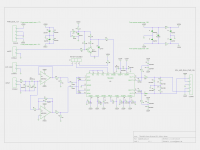 tda8950_btl_schematic.png148.8 KB · Views: 2,008
tda8950_btl_schematic.png148.8 KB · Views: 2,008 -
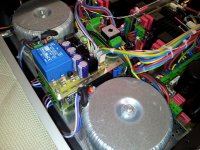 1200x900-2012-04-01 17.33.11.jpg198.4 KB · Views: 1,198
1200x900-2012-04-01 17.33.11.jpg198.4 KB · Views: 1,198 -
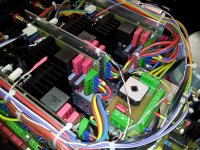 1200x900-2012-04-01 17.32.34.jpg215.4 KB · Views: 2,346
1200x900-2012-04-01 17.32.34.jpg215.4 KB · Views: 2,346 -
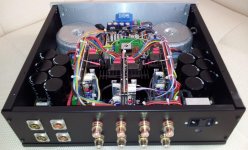 1200x900-2012-04-01 17.28.09.jpg122.9 KB · Views: 2,366
1200x900-2012-04-01 17.28.09.jpg122.9 KB · Views: 2,366 -
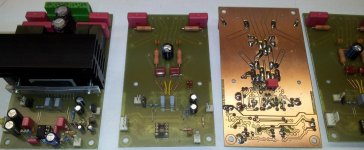 1200x900-2012-03-12 19.26.59.jpg128.4 KB · Views: 2,389
1200x900-2012-03-12 19.26.59.jpg128.4 KB · Views: 2,389 -
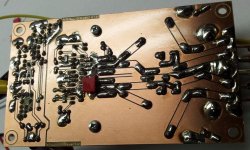 1200x900-2012-03-04 18.51.55.jpg155.2 KB · Views: 2,469
1200x900-2012-03-04 18.51.55.jpg155.2 KB · Views: 2,469
Last edited:
Some more pictures and schematics.
Gerber file for amplifier pcb.
BR, Toni
Gerber file for amplifier pcb.
BR, Toni
Attachments
-
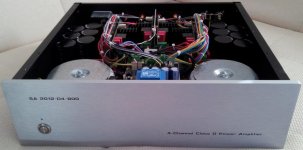 1200x900-2012-04-01 17.31.35.jpg60.9 KB · Views: 800
1200x900-2012-04-01 17.31.35.jpg60.9 KB · Views: 800 -
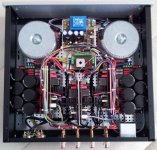 1200x900-2012-04-01 17.30.26.jpg95.7 KB · Views: 846
1200x900-2012-04-01 17.30.26.jpg95.7 KB · Views: 846 -
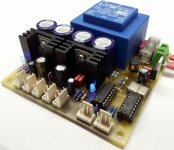 1200x900-2012-02-14 16.09.10.jpg83.4 KB · Views: 716
1200x900-2012-02-14 16.09.10.jpg83.4 KB · Views: 716 -
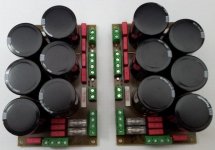 1200x900-2012-01-06 19.04.33.jpg47.3 KB · Views: 679
1200x900-2012-01-06 19.04.33.jpg47.3 KB · Views: 679 -
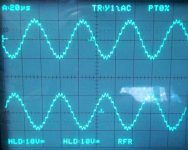 1200x900-2011-12-28 13.52.25.jpg35.8 KB · Views: 825
1200x900-2011-12-28 13.52.25.jpg35.8 KB · Views: 825 -
class_d_powersupply_schematic.pdf10.7 KB · Views: 429
-
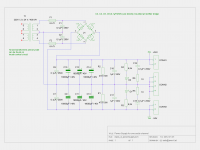 class_d_powersupply_schematic.png146 KB · Views: 1,151
class_d_powersupply_schematic.png146 KB · Views: 1,151 -
tda8950_btl.zip63.5 KB · Views: 564
-
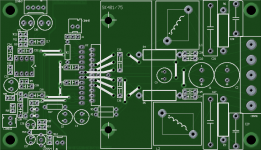 tda8950_btl.png45.7 KB · Views: 1,438
tda8950_btl.png45.7 KB · Views: 1,438
Good job, congratulations, but the maximum power output can not be 300W/8Ohm/channel when loading circuit to + / 35VDC. Power can reach max.150W/4Ohmi/ch but with high THD (~~10%). Remember, the human ear begins to perceive distortions if THD reaches about 2% (or more so). For this reason "audiophile power" of that TDA is at most 100W/4Ohm/channel (but stamp sound is far below the desired).
Thx! The TDA8950j is running in mono BTL mode and is capable to deliver maximum 300W/8R on dual 37V rails - see datasheet: TDA8950 :: NXP Semiconductors
I wouldn't use this amplifier for audiophile listening - party mode!
If you drive the above prototype amplifier to a maximum of 1% distortion you will get > 200W@8R
BR, Toni
I wouldn't use this amplifier for audiophile listening - party mode!
If you drive the above prototype amplifier to a maximum of 1% distortion you will get > 200W@8R
BR, Toni
BTL mode is something else (in the bridge circuit is capable of more power), but do not believe all datasheet specifications, for the reality is quite different.
This value is not from datasheet - it is measured:
If you drive the above prototype amplifier to a maximum of 1% distortion you will get > 200W@8R
BR, Toni
FYI: Toroid inrush current control and other housekeeping (DC protection ...) is done using this microcontroller controlled circuit:
amp2012 inrush control from project: LM3886 running inverting only bridged for 8R
BR, Toni
amp2012 inrush control from project: LM3886 running inverting only bridged for 8R
BR, Toni
Seriously? WOW 
Really, this is just awesome, I mean real classy, great cabling and layout and great finish.. The finish is of commercial worth and it would fetch you a high amount if you decided to go commercial.
Excited to see your build and will be hoping someday i could do the same.
Just 4 fun I have designed (now some years ago) a 4 channel class D power amplifier to get some feeling and knowledge about building class D amplifiers.
Attached some schematics and pictures of the result.
After searching for a simple chip I found the TDA8950j which has from low to mid range an acceptable good THD performance.
The TDA8950j can be clocked externally which I have used in this design to avoid interferences of the different pwm clocks in the audible range.
Maximum output power per channel is 300W/8R.
The amp pcb is single sided and uses some smt devices to save space and to fulfill some datasheet requirements.
For DIY use only feel free to build your party power machine.
BR, Toni
Really, this is just awesome, I mean real classy, great cabling and layout and great finish.. The finish is of commercial worth and it would fetch you a high amount if you decided to go commercial.
Excited to see your build and will be hoping someday i could do the same.
Really, this is just awesome, I mean real classy, great cabling and layout and great finish.. The finish is of commercial worth and it would fetch you a high amount if you decided to go commercial.
Excited to see your build and will be hoping someday i could do the same.
THX for your nice words!
BTW: Building different amplifier topologies is just a hobby for me. Everybody can reuse my designs as long as this is done for non commercial DIY usage only.
BR, Toni
I wouldn't use this amplifier for audiophile listening - party mode!
Hi Toni
I'm curious... what you mean by you wouldn't use the amp for audiophile listening?
I explain, I am new to Class D and I don't know if what I hear is a defect inherent to the TDA8950j or there is a design problem. At mid to high power it sounds very well, but from silence to 10w or so (I didn't measure anything yet) I hear a pretty audible distortion, likewise the old famous crossover distortion known on poor calibrated Class AB amps... is it a weak point of Class D, of TDA8950j or a serious problem with my amp?
I didn't build the amp, it was made by another guy who told me it is normal, that the amp is intended to be used at high power. Is that so?
My doubt is because reading the datasheet of the chip the real life result is not consisten with the 0.05% THD @1watt 8 ohm load. My amp is also BTL mono configuration.
Thanks in advance!
Rei.
Hi Toni
I'm curious... what you mean by you wouldn't use the amp for audiophile listening?
...
The TDA8950j has definitely a THD problem in the 5 - 7 kHz range which can be heard playing special audio material e.g. piano music.
This THD problem can be seen in the datasheets too. I have verified this problem using my Distortion analyser VP7723D. Own THD plot compared to the datasheet is nearly identical, so it is not a problem of the implementation.
I'm currently in the process removing the TDA8950j stages and replacing them with IRS2092 based bridging amplifier modules.
Have a look at this project for further information:
http://www.diyaudio.com/forums/class-d/255046-systemd-liteamp.html
Results will be posted in above thread and maybe also here or in a separate thread.
Stay tuned,
Toni
OMG!.. about a year ago I was near to buy the IRAUDAMP7D from International Rectifier..
http://www.irf.com/technical-info/refdesigns/iraudamp7d.pdf
.. which uses the IRS2092 driver!
Thank you Toni, I'll go to the project thread you mention.
Rei.
http://www.irf.com/technical-info/refdesigns/iraudamp7d.pdf
.. which uses the IRS2092 driver!
Thank you Toni, I'll go to the project thread you mention.
Rei.
astx,
TDA8950 when operating in BTL mode to give more power what happen if your amp load drops below 4ohms?
I bought a commercial TDA8950 and configured it into BTL mode but my spkrs is about 3-4 ohms, the ampl. crashed, i.e. failed and never recovered. Luckily my spkr is still ok.
Any explanations.
TDA8950 when operating in BTL mode to give more power what happen if your amp load drops below 4ohms?
I bought a commercial TDA8950 and configured it into BTL mode but my spkrs is about 3-4 ohms, the ampl. crashed, i.e. failed and never recovered. Luckily my spkr is still ok.
Any explanations.
The TDA8950j has definitely a THD problem in the 5 - 7 kHz range which can be heard playing special audio material e.g. piano music.
Toni
I can't see this. As far as I can see the THD stays well below 1% (more like 0,1% above 6 khz). Is this really audible or is it something else.
I have heard some artifacts playing piano, but I mounted the print wrong, so I expected this to be the problem. I will have a new amp up and runninge in the next few weeks, then I can comment on the full range qualities, and if I still have the artifacts on piano recordings.
KSTR says the chip is broken - here : http://www.diyaudio.com/forums/loun...lifier-general-discussion-17.html#post4040365
Toni,
I was thinking of using your design four a bass guitar amplifier. Do you think the distortion means it is not OK for me?
This is exactly the same application I intend to use my amp, for my bass guitar, but in the first run I "hear" a distinctive distortion at low level, let's say less than 10w output into 8ohms. After Toni's reply I read again the datasheet of the TDA8950j and in theory the THD figure would be not an issue to play the bass, even with all the treble up in order to emphazise the fret whip on a slap, a bit of distortion there would be part of the charm for the performance
But I injected a sine wave of 30Hz and I hear a buzzing tone. Unfortunately my scope is broken at the moment, once I got it repaired I will take pictures to show what I hear. For my experience seeing and hearing waves surely I will find the classic distrortion at the zero crossing of the sine wave...
I made the 30Hz test just because at low power I would rather feel it almost like silence and then I found that buzz clearly right at the begining of the volume rise from zero!... I have to add that I made this quick test after I heard the distortion right away when I put the first CD!!!.. it means, all the frequencies from low to high.
I am inspecting the board and I'm seeing something weird at the inputs, the differential inputs are not made according to the datasheet example, it appears they are not properly DC isolated with caps.. it's getting hard for me to see it right because they also made it almost all surface mount, but I try to verify if there is some mistake in the board.
A bad designed input could be the source of distortion I talk about? is it possible to generate a crossover distortion at audio level before pulse modulation if the input is implemented in the wrong way?
Rei.
KSTR says the chip is broken - here : http://www.diyaudio.com/forums/loun...lifier-general-discussion-17.html#post4040365
OMG!... if I have read the KSTR explanation I would save most of my previous post!... it answered me completely and is exactly "what I hear" in my amp!!!... I guess I will trhow this amp through the window!.. should I play heavy metal I would love it, but as it is, it doesn't fulfill my needs!
Last edited:
- Status
- This old topic is closed. If you want to reopen this topic, contact a moderator using the "Report Post" button.
- Home
- Amplifiers
- Class D
- 4 x BTL 300W/8R - a TDA8950j based 4 channel power amplifier